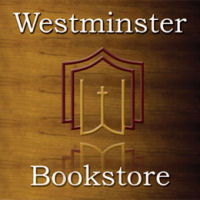Because it was a child of war, the OPC was originally composed of an oddly mismatched (in retrospect) coalition that might be roughly divided into two: the Westminster group and the McIntire/Buswell group. On the Westminster side were leaders who were associated with Westminster Seminary such as J. Gresham Machen, Cornelius Van Til, John Murray, Paul Wooley, Ned Stonehouse (the editor of the Presbyterian Guardian), and Charles Woodbridge. Those who occupied the McIntire/Buswell camp were those who eventually left the OPC. This group, of course, included among them Carl McIntire and J. Oliver Buswell.
In their battles with the modernists of the PCUSA these groups found themselves sharing a similar agenda and a common enemy. George Marsden puts it this way: “As long as conservatives were confronted with the presence of modernists within their own institutions, and as long as there was real hope of retrieving control of the church, there was little time for disputes on fine points.”[4] After the split with the PCUSA, of course, these two conservative groups now shared the same house. From the perspective of hindsight it seems like a marriage that was destined to fail, but at the time it did not perhaps seem so obvious. Why, after all, should it be so hard to remain together, now that the issue of an aggressive and militant form of modernism was off the table?
In the beginning there was what might be termed a “honeymoon phase” for the newly formed denomination. One detects it in the triumphant declaration by J. Gresham Machen that in forming the OPC “we became members of a true Presbyterian Church; we recovered, at last, the blessing of true Christian fellowship. What a joyous moment it was! How the long years of struggle seemed to sink into nothingness compared with the peace and joy that filled our hearts!”[5] That sense of joy was not to be long lived or shared by all. Less than a year later, however, some of those same people would choose to separate from this “true Presbyterian Church.”
It would be a mistake for anyone to think that the sole issue which caused the division of 1937 was the issue of the church’s relationship to the alcohol question. The issues were not at all simple. As Marsden summarizes it, there were at least three primary driving issues leading to the split: dispensational premillennialism (doctrinal), abstinence from alcohol (moral), and participation with non-Presbyterians in foreign missions (ecclesiastical).[6] It was never just one thing, and there were many factors and personalities at play beyond these three, as well (not the least of which was the death of Machen in January of 1937). In George Marsden’s analysis, however, the issue of temperance was certainly “the most emotionally charged of the issues that had been raised.”[7]
Through a series of upcoming blog posts we will look more closely at this “most emotionally charged” of the issues that divided the OPC. By the end, not only will we have explored a fascinating period in Presbyterian history, but we will really see that the issue which was most pressing in the division wasn’t ultimately disagreement over the wrongness of alcohol, but disagreement over two competing visions of how Christian Liberty ought to be put into practice.
In Part 2 of this series we will consider the developments that ultimately led to the division of the OPC in 1937.
__________________________________
[1] The Orthodox Presbyterian Church was initially called the Presbyterian Church of America until it was forced to change its name by court order. However, in spite of the anachronism and for the sake of continuity I will here refer to it by its later name, the OPC.
[2] D G. Hart and John R. Muether, Fighting the Good Fight: A Brief History of the Orthodox Presbyterian Church (Philadelphia: Committee on Christian Education and the Committee for the Historian of the Orthodox Presbyterian Church, 1995), 7.
[3] See J. Gresham Machen, Christianity and Liberalism, new ed. (Grand Rapids, Mich.: William B. Eerdmans Pub. Co., 2009), 2.
[4] George M. Marsden “Perspective on the Division of 1937” in Charles G. Dennison and Richard C. Gamble, eds., Pressing Toward the Mark: Essays Commemorating Fifty Years of the Orthodox Presbyterian Church (Philadelphia: Committee for the Historian of the Orthodox Presbyterian Church, 1986), 299.
[5] The Presbyterian Guardian 2 (June 22, 1936), 110.
[6] Marsden, 296.
[7] Marsden, 308.




No comments:
Post a Comment
Before posting please read our Comment Policy here.
Think hard about this: the world is watching!